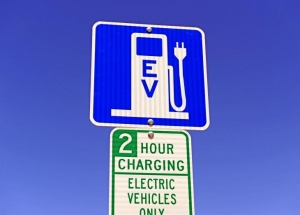
Electric trucks are coming to a neighborhood near you, and they might be coming a lot sooner than you think — and in forms you might not be expecting.
Almost since the time that Elon Musk began talking about electric cars — 2003, for the record — made by his then-new company called Tesla becoming common sites on the roads by 2010 people have been talking about the eventual application of electric automotive technology to the trucking industry. But for most of the last decade-plus, that’s all it’s been — talk.
Suddenly — or so it seems — every big truck manufacturer is jumping on the electric bandwagon. Volvo, Daimler, Peterbilt, and Dutch truck maker DAF have all aggressively entered the game. So is BYD, a little-known maker of commercial electric vehicles, and Thor Trucks, an electric vehicle engineering startup that’s seeking to team up with an existing truck maker to produce its new design on a large scale.
For that matter, Musk’s Tesla is itself working on what it calls the Tesla semi-truck, though the project appears to have been moved off Musk’s very full front burner. And so is the confusingly unrelated Nikola Motor Company (both it and Tesla draw their names from famed physicist, engineer, and inventor Nikola Tesla). However, Nikola’s truck is not a pure electric vehicle but rather a hybrid design that uses a hydrogen fuel cell to generate the electricity to power its multiple drive motors. Nikola’s entry, as a hybrid, may not count as a true electric vehicle in some people’s estimation, but its large hydrogen fuel cell does give it much greater range than pure electric trucks. That’s a key reason why Anheuser-Busch has ordered up 800 Nikola trucks with ranges of 500 to 1,200 miles and re-fueling times of less than 20 minutes. A-B hopes to convert its entire long-haul fleet to “renewable power” by 2025.
Electric trucks and the last mile
But, with the exception of the longer-legged Nikola hydrogen-electric 18-wheeler, the electric trucks now or soon-to-be on the market are being aimed at primarily local, relatively short-haul delivery and service markets. That’s because, despite great advancements in battery technology, they still are a long way from being able to drive the kind of very long distances that diesel-powered, over-the-road trucks typically cover. For now, all the other electric models seem to be good for between 100 and 300 miles on one charge.
And that explains why the first electric trucks most of us will see likely will be on the surface streets around town. While their range is relatively short, the first generation of electric trucks are being designed to haul impressively large loads. That means they’re ideal for using as garbage collection trucks, local delivery box trucks, and heavy-duty service trucks — the kind used by utility companies and local street and highway departments.
Two advantages of using electric trucks in those roles will be the huge reduction in both noise and emissions. Electric engines produce very little of either.
The disadvantage?
Obviously, the purchase price, which in all cases will be more expensive than existing diesel models. But improved efficiency and lower direct operating costs (“filling up” these vehicles with electricity costs a lot less than filling their conventional counterparts with diesel) will offset the higher purchase price over time.
Early adopters of such electric trucks also will help prove or disprove the manufacturers’ belief that electric trucks will cost less to maintain and will last much longer because such vehicles have vastly fewer moving parts in their drive trains than conventionally powered trucks.
So, don’t be surprised when early some morning your garbage gets picked up, much more quietly, by an electric-powered truck. And you might well see electric-powered package delivery trucks gliding silently down your street.
Battery technology may well improve enough, and the availability of electric “re-fueling” stations may eventually become broad enough that one day electric trucks will become common sights out on the Interstates, miles and miles away from their home bases and charging stations.
But until then, you can expect to see more and more mid-size electric trucks being used in short-range service and delivery roles. It’s not the eventual goal, but using electric vehicles as part of a final-mile solution is a great proving ground for the technology, and is a great step toward getting electric engines in long-haul trucks.